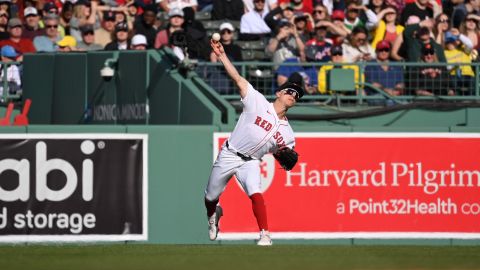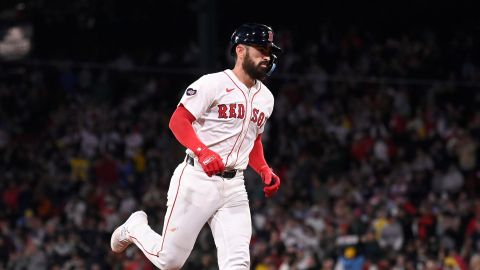 Forget what you know about the lore of the Boston Red Sox’success in the 2000s.
Forget what you know about the lore of the Boston Red Sox’success in the 2000s.
The movie Moneyball says in a postscript note that Boston won its 2004 world championship on the back of Billy Beane-like principles. Likewise, Theo Epstein has been trumpeted as a computer geek wonderboy who played the Red Sox like a deck of cards and won two high-stakes hands in 2004 and 2007.
This is mostly false.
With players like J.D. Drew and Kevin Youkilis at the forefront, the 2007 team was closer to a Moneyball-esque squad. However, both championships were more the result of the Red Sox’ ability to buy premium, high-priced talent like Pedro Martinez, Curt Schilling, Manny Ramirez and Josh Beckett. To be fair, a few shrewd acquisitions (David Ortiz, Jason Varitek) and developing talented players via the farm system (Dustin Pedroia, Jonathan Papelbon, Youkilis) had a hand in that success as well.
And while the Red Sox will always be a hybrid of high-priced talent and minor league development, the signing of Jonny Gomes to a two-year, $10 million contract is a strong indication that the team is closer than ever to the Moneyball model. Gomes may not be the splashy signing Red Sox Nation had hoped for, but what he may well end up being is one of the best bargains on the free agent market.
Off the bat, Gomes’ multifaceted downside is obvious. For one, he’s limited to left field, and he’s a below-average defender at best. Fenway Park, of course, limits the liability in terms of left fielders and the amount of ground they have to cover, but Gomes played more as a designated hitter in 2012 with the Athletics than he did in the outfield.
The other downside to Gomes is that he is best deployed as a platoon option. Gomes had a .974 OPS in 196 plate appearances against left-handed pitchers in 2012 but a .715 mark in 137 plate appearances against right-handers.
All that being said, there are a lot of things that Gomes does well that can really help the Red Sox. The first is the old cry of the Moneyball philosophy: He gets on base. Gomes’ batting average doesn’t look pretty, but his .334 on-base percentage and .455 slugging percentage are more than just respectable — they’re the mark of an offensive plus who’s now moving to a haven for right-handed hitters.
Speaking of Fenway Park, Gomes has had a fair sample size of at-bats throughout his career, and the numbers are about in line with his career averages. Gomes has started 24 games at Fenway and put up a .783 OPS, including three home runs. Considering he faced some stacked Red Sox rotations during his years with the Devil Rays, those numbers are pretty fair for the ballpark.
Either way, Gomes, although turning 32 on Thursday, could prove to be a bargain for the Red Sox, and he doesn’t figure to be much of a risk. The Sox know what kind of player they’re getting and aren’t likely asking him to be an everyday left fielder. However, if he can continue to do the things the Red Sox like about him — getting on base and hitting right-handed pitching with power — then he could prove to be very valuable as the Red Sox retool their roster.
The inevitable questions then become what this means for the rest of the Red Sox roster and offseason. The answer is that it definitely doesn’t preclude the Red Sox from going after any of the other free agent outfielders out there, namely Cody Ross and Josh Hamilton. Hamilton may be unlikely for reasons beyond the presence of Gomes, but it does give the Red Sox some insurance in case the market for Ross inflates beyond what Boston sees as reasonable. The Red Sox still have a hole in right field, but more to the point, Gomes’ production in 2012 wasn’t far off what Ross put up..
The Gomes signing is far more interesting for what it may mean for the Red Sox philosophically. Just to reiterate, Boston will always have a certain amount of high-priced talent on its roster, but what the Gomes signing does is reinforce that the Red Sox are committed to following through on the principles that general manager Ben Cherington has always espoused: discipline and financial flexibility.
Bringing in Gomes is not the splashy move that may or may not be coming. But it’s the kind of move that allows the team to remain competitive while continuing to hunt down those splashy signings — but opportunistically, rather than taking on contracts the team isn’t comfortable with.
It’s a sign of the realities of the luxury-tax era that even the deep-pocketed Red Sox have financial constraints, so the signing must be understood in this kind of context. But given the realities of overhauling a roster heading into 2013, it could be a very shrewd move for the Red Sox.
Photo via Flickr/Keith Allison



